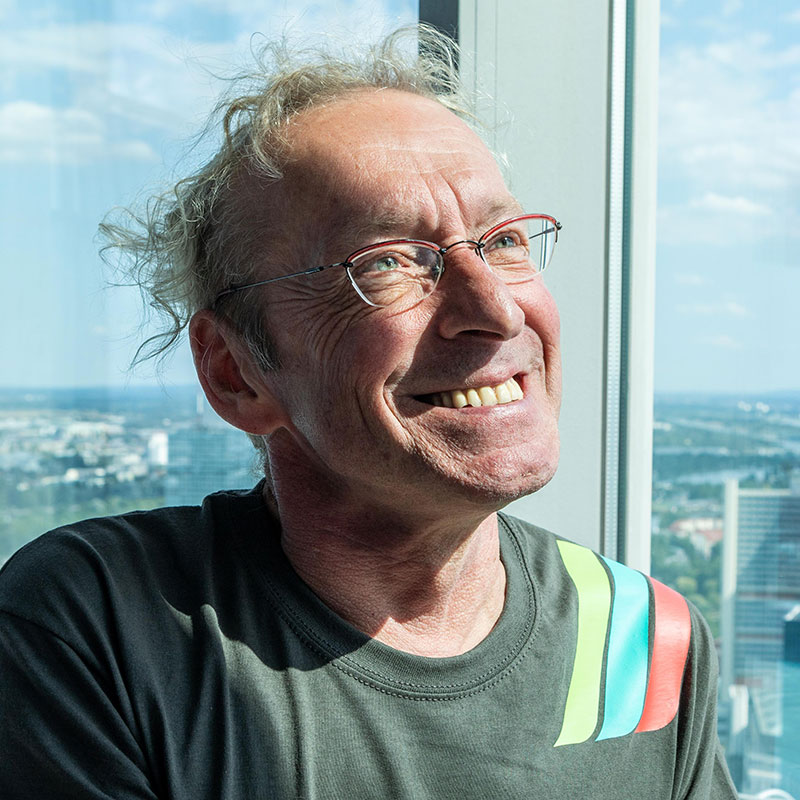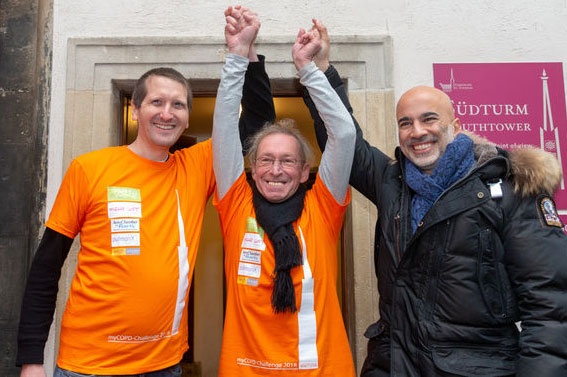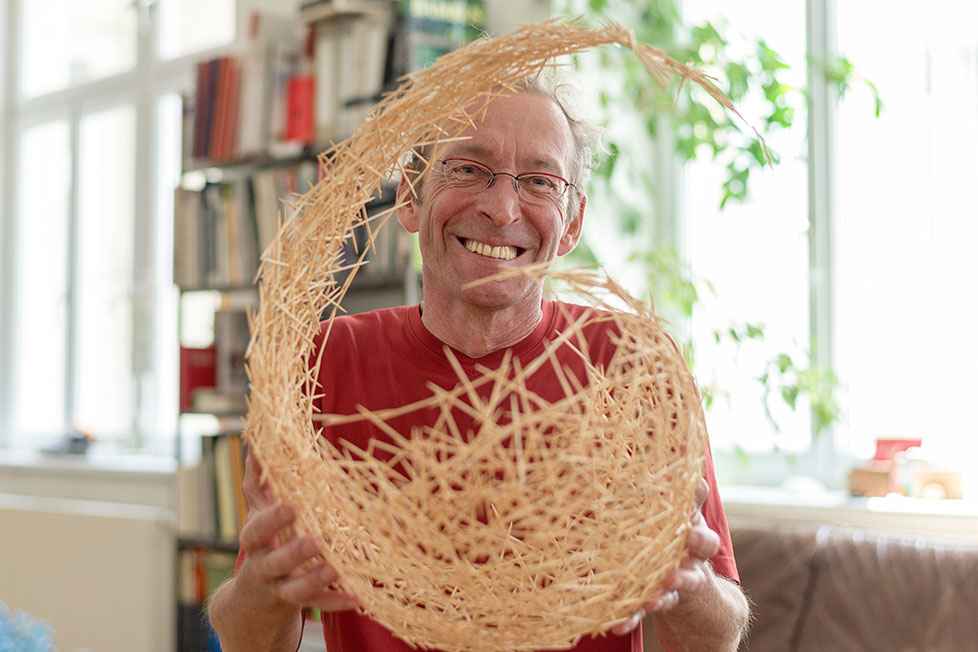Eberhard Jordan — Austria
Details of Treatment:
Age at time of surgery: 55 years
Treatment center: Otto Wagner Hospital Vienna
Date of surgery: January 2017

My life before the Zephyr Valve treatment:
I was diagnosed with COPD sometime in 2000: I was independent, rather busy, played little to no sport, smoked profusely, and I began to find it difficult to breathe. My pulmonologist said that I had Stage 2 COPD. My response was: “Yes, that’s just the way it is. It’s not so bad” – even though my father had had to combat a severe lung disease. My health received another, rather hard, knock after professional and private strokes of fate.
Suddenly, I couldn’t breathe and started gasping after 100 m. The diagnosis: COPD Stage 3, with the advice “If you don’t stop smoking soon, you will first need oxygen and then be completely finished.” In the meantime I had started to do things like breathing training. But I still continued to smoke and party until late. That came to a sudden end one day in 2014 as I noticed when shopping that I could only go a meter at a time and ended up being taken to hospital, to intensive care, by ambulance.
Today I can say that my stay in intensive care was a chance for a new beginning for me. Although it was a difficult upwards path. I could barely go 10 m without suffering severe shortness of breath. And so began the long journey back towards improvement with the help of my daughters and friends, who accompanied me in the beginning on my “excursions” – to be sure that I would get home safe again.
My life after the Zephyr Valve treatment:
After various setbacks in my health and the subsequent interventions and corrections, in January 2017 it was time for my Zephyr Valve implantation, done in the Otto Wagner Hospital (OWS) in Vienna. Three months after implantation, I was back on the road to a good recovery. Originally starting at 24% FEV1 (forced expiratory volume in 1 second) of the target, my FEV1 value was now 36% – and improving.
My COPD stage has gone down from 4 to 3 and I can walk again without becoming exhausted, carry out activities of daily life myself, and spend lots of great time with my children and grandson. I even manage to walk 1000 m in my fitness studio, definitely slowly, but under my own steam. This only works because training has become an essential part of my life – and still is. Taking medicine that has been customized for me, a healthy diet and lots of love and supervision – also by doctors and therapists – are other important factors. As I would like to encourage other COPD patients and give them confidence, I started my own blog (myCOPD-blog.com) in January 2017.
For the same reasons, I set myself a personal challenge, climbing the 343 steps of St. Stephen’s Cathedral in Vienna. I successfully did this on 21 November 2018 after a long and goal-oriented training. Through this action, I could give the disease COPD a voice – with an overwhelming response. On 20 November 2019, I set myself the next challenge: the 776 steps of Vienna’s Danube Tower!
*Criner G et al AM J Resp Crit Care Med 2018, Published on 22-May-2018 as 10.1164/rccm. 201803 0590OC.


What is the Zephyr Valve procedure?
The Zephyr Valve’s purpose is to treat patients with severe emphysema – a form of chronic obstructive pulmonary disease, also called COPD. In severe emphysema, the air sacs do not function properly, and the used air is trapped in the diseased areas. The damaged parts of the lung get bigger, putting pressure on the healthy parts of the lung and the diaphragm. This is called hyperinflation.
When that happens, it is difficult to breathe properly and take deep breaths. The Zephyr Valve is not a medicine or surgery during which the skin is cut. During a short 30-60 minute intervention, a doctor uses a bronchoscope to insert on average four tiny valves in the airways. The Zephyr Valve allows the trapped air to escape until the hyperinflation has been reduced. The healthier parts of the lung can expand and take in more air. Zephyr Valves have demonstrated their usefulness for patients, helping them to breathe more easily, be more active and enjoy a better quality of life.*
Find out more at getcopdhelp-co-uk.pulmonx.com
The results of case studies do not necessarily allow conclusions to be drawn in other cases. Results in other cases can be different. Possible complications associated with the endobronchial valve treatment include: Pneumothorax, deterioration of the COPD symptoms, pneumonia, dyspnea and in rare cases death.
Pulmonx International Sàrl | Rue de la Treille 4, 2000 Neuchâtel, Switzerland
Pulmonx UK Ltd. | Highlands House, Basingstoke Road, Spencers Wood,
Reading, Berkshire, RG7 1NT, United Kingdom
info@getcopdhelp-co-uk.pulmonx.com
The Zephyr® Endobronchial Valve (EBV) is an implantable bronchial valve that controls the airflow in order to improve the lung function of patients with hyperinflation in connection with severe emphysema and/or to reduce air leaks. The Zephyr Valve is contraindicated for: Patients who have a contraindication for bronchoscopy; patients with signs of an active pulmonary infection; patients with known allergies to nitinol (nickel-titanium) or metal components (nickel or titanium); patients with known allergies to silicon; active smokers. It can only be used by specially trained doctors. Before use, attention must be paid to all further details about areas of application, contraindications, warnings, precautions and adverse effects in the instruction manual for the Zephyr® Endobronchial Valve system.
